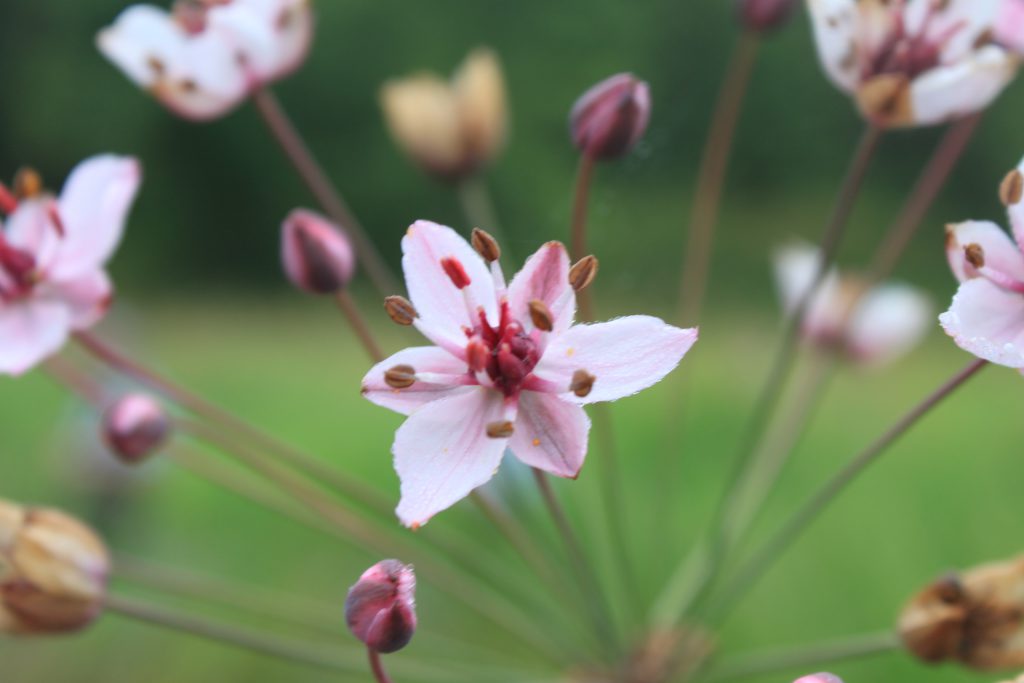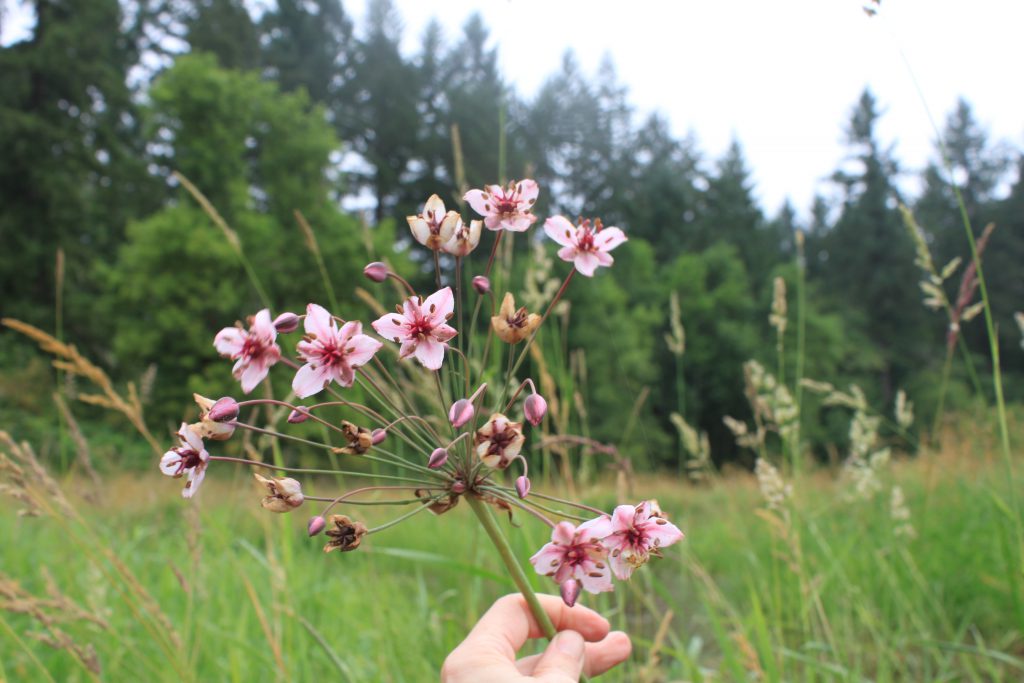Scientific name: Butomus umbellatus
What Is It?
Flowering rush (Butomus umbellatus) is a freshwater aquatic plant that grows for multiple years in lakes, rivers, and wetlands. It spreads quickly through bulbils (small bulb-like structures) and rhizome (a type of underground stem) fragments.
Is It Here Yet?
Yes. It is established in the upper Columbia River watershed, the lower Yakima River, and the Spokane River. Flowering rush threatens the entire downstream Columbia River system because it spreads easily on water currents. It is also in Pierce and Whatcom Counties in western Washington.
Why Should I Care?
It can outcompete native plants and create areas where other plants cannot grow. It reduces recreational opportunities by clogging water bodies, making boating and swimming difficult. It also has been linked to swimmer’s itch. Flowering rush provides cover and nesting habitat for invasive fish that eat desirable native fish, such as salmon and trout. It disrupts water delivery in irrigation canals and is hard and costly to control.
How Can We Stop It?
Flowering rush is difficult to control, and efforts to contain it have been unsuccessful. It can be dug out manually, but all rhizomes and bulbils must be removed. Bulbils detach easily during the removal process and can quickly grow into new plants. If the plants are near the shore, they may be covered with landscape mats. Herbicide research is ongoing.
What Are Its Characteristics?
- Long, thin, triangular, sword-like leaves.
- Flowering stalk can grow up to 5 feet tall.
- Clusters of pink flowers with 3 petals and 3 smaller petal-like structures.
How Do I Distinguish It From Native Species?
Flowering rush is difficult to identify when not flowering; it blends in with other shoreline and aquatic vegetation. If not flowering, the presence of rhizomes and triangular leaves help identify it. The pink flowers are distinctive.
Additional Photos




